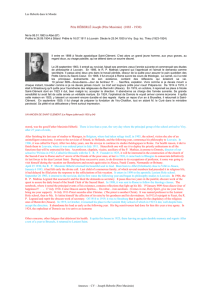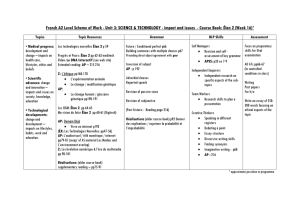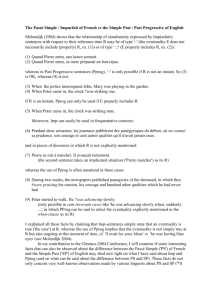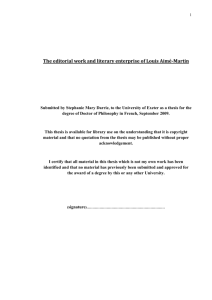Print Description
advertisement
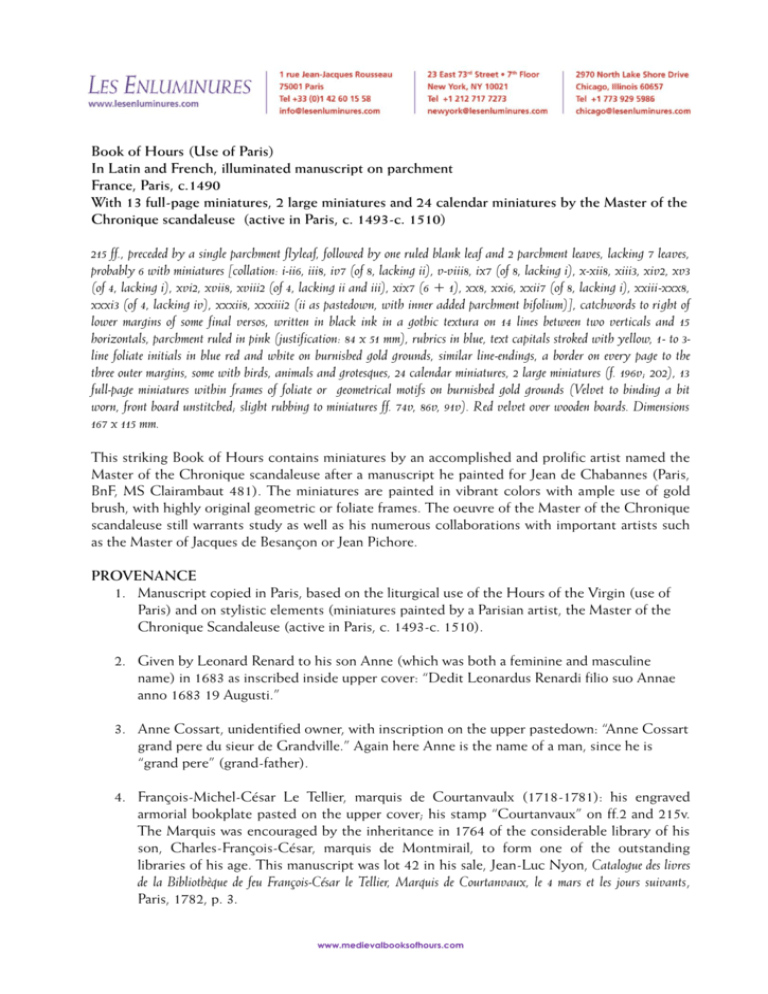
Book of Hours (Use of Paris) In Latin and French, illuminated manuscript on parchment France, Paris, c.1490 With 13 full-page miniatures, 2 large miniatures and 24 calendar miniatures by the Master of the Chronique scandaleuse (active in Paris, c. 1493-c. 1510) 215 ff., preceded by a single parchment flyleaf, followed by one ruled blank leaf and 2 parchment leaves, lacking 7 leaves, probably 6 with miniatures [collation: i-ii6, iii8, iv7 (of 8, lacking ii), v-viii8, ix7 (of 8, lacking i), x-xii8, xiii3, xiv2, xv3 (of 4, lacking i), xvi2, xvii8, xviii2 (of 4, lacking ii and iii), xix7 (6 + 1), xx8, xxi6, xxii7 (of 8, lacking i), xxiii-xxx8, xxxi3 (of 4, lacking iv), xxxii8, xxxiii2 (ii as pastedown, with inner added parchment bifolium)], catchwords to right of lower margins of some final versos, written in black ink in a gothic textura on 14 lines between two verticals and 15 horizontals, parchment ruled in pink (justification: 84 x 51 mm), rubrics in blue, text capitals stroked with yellow, 1- to 3line foliate initials in blue red and white on burnished gold grounds, similar line-endings, a border on every page to the three outer margins, some with birds, animals and grotesques, 24 calendar miniatures, 2 large miniatures (f. 196v; 202), 13 full-page miniatures within frames of foliate or geometrical motifs on burnished gold grounds (Velvet to binding a bit worn, front board unstitched; slight rubbing to miniatures ff. 74v, 86v, 91v). Red velvet over wooden boards. Dimensions 167 x 115 mm. This striking Book of Hours contains miniatures by an accomplished and prolific artist named the Master of the Chronique scandaleuse after a manuscript he painted for Jean de Chabannes (Paris, BnF, MS Clairambaut 481). The miniatures are painted in vibrant colors with ample use of gold brush, with highly original geometric or foliate frames. The oeuvre of the Master of the Chronique scandaleuse still warrants study as well as his numerous collaborations with important artists such as the Master of Jacques de Besançon or Jean Pichore. PROVENANCE 1. Manuscript copied in Paris, based on the liturgical use of the Hours of the Virgin (use of Paris) and on stylistic elements (miniatures painted by a Parisian artist, the Master of the Chronique Scandaleuse (active in Paris, c. 1493-c. 1510). 2. Given by Leonard Renard to his son Anne (which was both a feminine and masculine name) in 1683 as inscribed inside upper cover: “Dedit Leonardus Renardi filio suo Annae anno 1683 19 Augusti.” 3. Anne Cossart, unidentified owner, with inscription on the upper pastedown: “Anne Cossart grand pere du sieur de Grandville.” Again here Anne is the name of a man, since he is “grand pere” (grand-father). 4. François-Michel-César Le Tellier, marquis de Courtanvaulx (1718-1781): his engraved armorial bookplate pasted on the upper cover; his stamp “Courtanvaux” on ff.2 and 215v. The Marquis was encouraged by the inheritance in 1764 of the considerable library of his son, Charles-François-César, marquis de Montmirail, to form one of the outstanding libraries of his age. This manuscript was lot 42 in his sale, Jean-Luc Nyon, Catalogue des livres de la Bibliothèque de feu François-César le Tellier, Marquis de Courtanvaux, le 4 mars et les jours suivants, Paris, 1782, p. 3. www.medievalbooksofhours.com 5. Susannah Monypenny (died 1873), as inscribed on upper cover: “This book was the property of Susannah Monypenny, my father’s sister, but was presented to me at her demise by R P D M her son Obiit February 21st 1873 aet. 71 anno.” Susannah, daughter of James Dearden of Handle Hall (Lancashire), married in 1835 Robert Joseph Monypenny of Maytham Hall, Kent (1806-1842), a descendant of the Monypenny of Pitmilly in Fife, Scotland. Susannah had four brothers; the youngest, Peregrine Royds Dearden (18111879), was joint guardian of her son, Robert Philips Dearden Monypenny (1836-1890), and it was probably one of Peregrine’s daughters who was given the Book of Hours. Other candidates are the daughters of her eldest brother, James Dearden F.S.A., who owned an illuminated manuscript Dutch Book of Hours (Amsterdam, Menno Herzberger cat. 100, 1940, no 1) as part of the extensive library he built up at Rochdale Manor, which he had purchased from Lord Byron. TEXT ff. 1v-13, Calendar, in red, blue and gold, use of Paris [gold entries include Genevieve (3 Jan.); Croix (twice, 3 May and 14 Sept.); Denis (9 Oct.); Marcel (3 Nov.)]; ff. 14-21v, Gospel extracts; ff. 22-26v, Obsecro te; ff. 26v-29v, O intemerata; ff. 31-109v, Office of the Virgin, use of Paris; with f. 31, Matins (lacking penultimate leaf); f. 60, Lauds; f. 75, Prime; f. 82, Terce; f. 87, Sext; f. 92, None (lacking end); f. 96, Vespers; f. 104, Compline (lacking end); ff. 110-113, Hours of the Cross (lacking opening); ff. 114-118, Hours of the Holy Spirit; ff. 119-133v, Penitential Psalms (lacking end); ff. 134-139, Litany; ff. 140-195v, Office of the Dead, unidentified use; The Office of the Dead has Ottosen: 72, 14, 24, 57, 24, 68, 28, 46, 38. This is as Lyon BM, MS 5152, except for the reversal of 24 and 68 in the second nocturne. ff. 196-202, Fifteen Joys of the Virgin; ff. 202v-206v, Seven Requests of Our Lord; ff. 207-215, Suffrages; f. 207, St Michael; f. 207v, St John the Baptist (lacking end); f. 208, St John the Evangelist; f. 208v, St. Peter and St. Paul; f. 209, St. Sebastian; f. 210v, St. Nicholas; f. 211v, St. Anne; f. 212, St. Catherine; f. 213, St. Margaret; f. 214, St. Barbara; f. 214v, St. Avoye; www.medievalbooksofhours.com ILLUSTRATION The subjects of the full-page miniatures are as follows: f.13v, St. John being boiled in oil at the Latin Gate; in the background John on Patmos; f. 15v, St. Luke; f. 17v, St. Matthew; f. 20v, St. Mark; f. 30v, Tree of Jesse; f. 74v, Nativity; f. 81v, Annunciation to the Shepherds; f. 86v, Adoration of the Magi; f. 91v, Presentation in the Temple; f. 103v, Coronation of the Virgin; f. 113v, Pentecost; f. 118v, Last Judgment; f. 139v, Death attacking a Pope, Emperor and King. The subjects of the large miniatures are as follows: f. 196, Virgin enthroned with the Child flanked by two angels; f. 202v, Trinity; The subjects of the small miniatures are as follows: f. 207, St. Michael; f. 208, St. John the Evangelist; f. 208v, St. Peter and St. Paul; f.209, St. Sebastian; f. 210v, St. Nicholas; www.medievalbooksofhours.com f. 211v, St. Anne; f. 212, St. Catherine; f. 213, St. Margaret; f. 214, St. Barbara; f. 214v, St. Avoye. The subjects of the calendar miniatures are as follows: f. 1v, January, Man dining; f.2, January Aquarius emptying his water pot into a river; f. 2v, February, Man warming his hands at a fire while another brings in wood; f. 3, February, Pisces as three fish swimming in a river; f. 3v, March, Pruning vines; f. 4, March, Aries in a landscape; f. 4v, April, Two ladies gathering flowers in a garden; f. 5, April, Taurus in a landscape; f. 5v, May, Man hawking; f. 6, May, Gemini as a naked man and woman partly concealed by shrubs; f. 6v, June, Two men scything; f. 7, June, Cancer as a lobster beside a river; f. 7v, July, Two men bundling sheaves of grain; f. 8, July, Leo in a landscape; f. 8v, August, Two men threshing; f. 9, August, Virgo in a landscape; f. 9v, September, Man sowing; www.medievalbooksofhours.com f. 10, September, Libra hanging above a landscape; f. 10v, October, Two women and a man harvesting grapes; f. 11, October, Scorpio in a landscape; f. 11v, November, Man and a woman butchering a pig; f. 12, November, Sagittarius galloping along a road; f. 12v, December, Man baking bread; f. 13, December, Capricorn trotting through a landscape. This intriguing Book of Hours was painted by a Parisian artist now accepted as the Master of the Chronique scandaleuse (active in Paris, c. 1493-1510). This artist was named after a copy of Jean de Roye’s work now in Paris (BnF, MS Clairambaut 481), illuminated for Jean de Chabannes (see Quicherat, 1855, pp. 231-279). Previously, he had first been called the Master of Morgan 219 after a Book of Hours in the Pierpont Morgan Library in New York; the Master of Jean de Bilhères after a Book of Hours for the abbot of Saint-Denis (Paris, BnF, MS lat. 1071); and the Master of the Couronnement d’Anne de Bretagne after a copy of this text in Waddesdon Manor. Indeed in 15041505 the Master illustrated for Anne the account of her second coronation (Rothschild Collection, Waddesdon Manor MS 22). For the copy of the Golden Legend, specially printed by Antoine Vérard for Charles VIII in 1493, he provided a grand frontispiece where the King, with large crown, kneels before the company of heaven with his Queen and her ladies in the bas de page below. The Master of the Chronique scandaleuse is easily recognizable by figures with conspicuous red lips and with half-closed eyelids that give the impression that they look slightly upwards. His repertoire extends from densely modeled figures to transparent watercolor-like draperies and landscapes. His subtle use of color shows his knowledge of the work of Jean Poyer of Tours. The Master of the Chronique scandaleuse was a regular collaborator with the successful Pichore workshop in Paris, as well as with the Master of Jacques de Besançon (see Exhibition Paris, France 1500, no. 105 and no. 107). It is now accepted that both the Master of the Chronique scandaleuse and Jean Pichore painted miniatures in the Flavius Josephus commissioned by the Archbishop of Rouen Georges d’Amboise (Paris, Mazarine, MS 1581; see Exhibition France 1500 (2010), no. 162). A recently discovered Book of Hours (London, Private Collection) shows the Master of the Chronique scandaleuse working in collaboration with Jean Pichore and the Master of the Cardinal de Bourbon, named after a copy of the Vie et miracles de monseigneur Saint Louis ordered by Charles de Bourbon (Paris, BnF, MS fr. 2829). Other important works attributable to the Master of the Chronique scandaleuse have resurfaced of late, such as the Epistres d’Ovide by Octavien de SaintGelais (see London, Christie’s, Arcana Collection, 7 July 2010, lot 42; codex exhibited at Jean Poyet: Artist to the Court of Renaissance France, exhibition held at the Morgan Library, New York (2001)). On the Master of the Chronique scandaleuse, see Avril, and Reynaud, 1993, pp. 274-276, 411-428; Exhibition France 1500 (2010), no. 105, 107; Wieck, 2004. The model for the Tree of Jesse, f.30v, seems to have been the cuts designed by the Master of the Très petites heures of Anne of Brittany, in particular that used in an Hours printed in Paris in 1495 www.medievalbooksofhours.com (I. Nettekoven, Der Meister der Apocalypsenrose der Sainte Chapelle und die Pariser Buchkunst um 1500, 2004, Abb. 153). The borders accompanying the miniatures are identical with those surrounding miniatures by Robinet Boyvin and the Master of the Geneva Latini in a Book of Hours sold in the sale at Christie’s in London, 13 June 2012, lot 11. The text page borders are in an earlier taste but the format of the book makes it most unlikely that it was written much before 1490. An Hours in Vienna (ÖNB, cod. 1927), from the same circle of illuminators, also combines text pages decorated in an earlier style with miniatures of the 1490s, perhaps by a hand related to the illuminator of our Horae (O. Pächt and D. Thoss, Die illuminierten handschriften und Inkunabeln der Österreichischen Nationalbibliothek, Französische Schule II, 1977, pp.73-81). The borders are very lively, with a diverse bestiary cavorting amongst the swirling acanthus and vine leaves. BIBLIOGRAPHY Avril, F. and N. Reynaud. Les manuscrits à peintures en France, 1440-1520, Paris, 1993. [Exhibition, Paris, 2010] Bresc-Bautier, G., T. Crépin-Leblond, E. Taburet-Delahaye, M. Wolff. France 1500. Entre Moyen Age et Renaissance, Paris, 2010. Delaunay, I. Echanges artistiques entre livres d’heures manuscrits et imprimés produits à Paris (vers 1480-1500), thèse de doctorat, Paris, 2000 (3 vol.). Nettekoven, I. Der Meister der Apocalypsenrose der Sainte Chapelle und die Pariser Buchkunst um 1500, 2004. Quicherat, J. “Un manuscrit interpolé de la Chronique scandaleuse,” Bibliothèque de l’Ecole des chartes, t. XVI (1855), pp. 231-279. http://www.persee.fr/web/revues/home/prescript/article/bec_03736237_1855_num_16_1_445300 Wieck, R. “Post Poyet,” in Excavating the Medieval Image, Manuscripts, Artists, Audiences, Essays in Honor of Sandra Hindman, ed. D. Areford and N. Rowe, 2004, pp. 247-263. BOH 102 www.medievalbooksofhours.com
